Emiliano Penaloza
Audio Prototypical Network For Controllable Music Recommendation
Jul 31, 2025Abstract:Traditional recommendation systems represent user preferences in dense representations obtained through black-box encoder models. While these models often provide strong recommendation performance, they lack interpretability for users, leaving users unable to understand or control the system's modeling of their preferences. This limitation is especially challenging in music recommendation, where user preferences are highly personal and often evolve based on nuanced qualities like mood, genre, tempo, or instrumentation. In this paper, we propose an audio prototypical network for controllable music recommendation. This network expresses user preferences in terms of prototypes representative of semantically meaningful features pertaining to musical qualities. We show that the model obtains competitive recommendation performance compared to popular baseline models while also providing interpretable and controllable user profiles.
Addressing Concept Mislabeling in Concept Bottleneck Models Through Preference Optimization
Apr 25, 2025Abstract:Concept Bottleneck Models (CBMs) propose to enhance the trustworthiness of AI systems by constraining their decisions on a set of human understandable concepts. However, CBMs typically assume that datasets contains accurate concept labels an assumption often violated in practice, which we show can significantly degrade performance (by 25% in some cases). To address this, we introduce the Concept Preference Optimization (CPO) objective, a new loss function based on Direct Preference Optimization, which effectively mitigates the negative impact of concept mislabeling on CBM performance. We provide an analysis on some key properties of the CPO objective showing it directly optimizes for the concept's posterior distribution, and contrast it against Binary Cross Entropy (BCE) where we show CPO is inherently less sensitive to concept noise. We empirically confirm our analysis finding that CPO consistently outperforms BCE in three real world datasets with and without added label noise.
TEARS: Textual Representations for Scrutable Recommendations
Oct 25, 2024



Abstract:Traditional recommender systems rely on high-dimensional (latent) embeddings for modeling user-item interactions, often resulting in opaque representations that lack interpretability. Moreover, these systems offer limited control to users over their recommendations. Inspired by recent work, we introduce TExtuAl Representations for Scrutable recommendations (TEARS) to address these challenges. Instead of representing a user's interests through a latent embedding, TEARS encodes them in natural text, providing transparency and allowing users to edit them. To do so, TEARS uses a modern LLM to generate user summaries based on user preferences. We find the summaries capture user preferences uniquely. Using these summaries, we take a hybrid approach where we use an optimal transport procedure to align the summaries' representation with the learned representation of a standard VAE for collaborative filtering. We find this approach can surpass the performance of three popular VAE models while providing user-controllable recommendations. We also analyze the controllability of TEARS through three simulated user tasks to evaluate the effectiveness of a user editing its summary.
Changepoint Detection in Highly-Attributed Dynamic Graphs
Jul 09, 2024
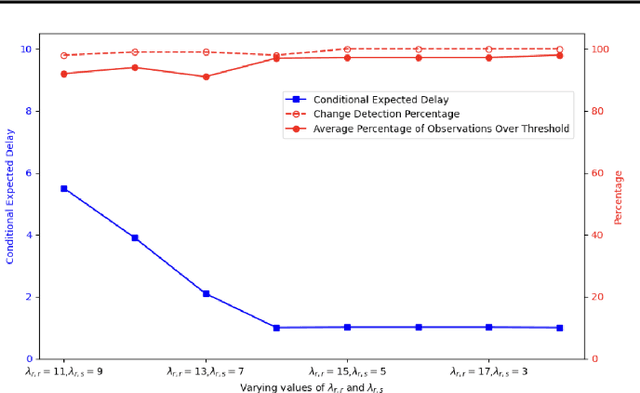
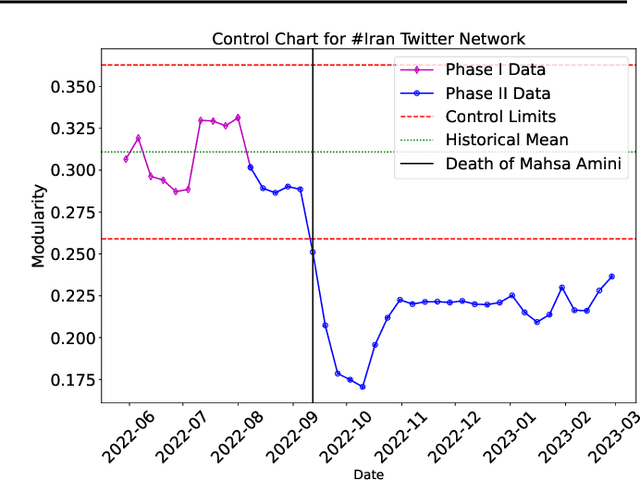
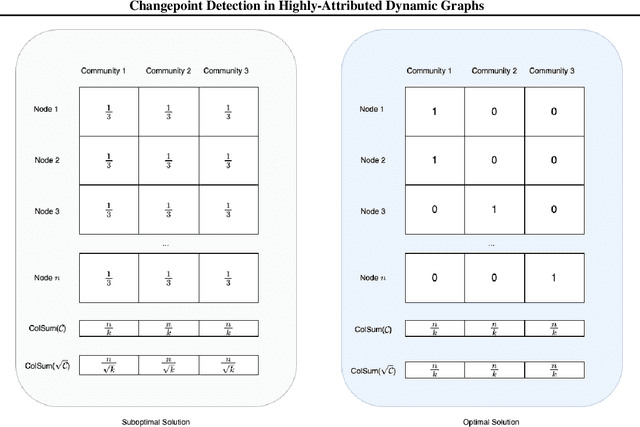
Abstract:Detecting anomalous behavior in dynamic networks remains a constant challenge. This problem is further exacerbated when the underlying topology of these networks is affected by individual highly-dimensional node attributes. We address this issue by tracking a network's modularity as a proxy of its community structure. We leverage Graph Neural Networks (GNNs) to estimate each snapshot's modularity. GNNs can account for both network structure and high-dimensional node attributes, providing a comprehensive approach for estimating network statistics. Our method is validated through simulations that demonstrate its ability to detect changes in highly-attributed networks by analyzing shifts in modularity. Moreover, we find our method is able to detect a real-world event within the \#Iran Twitter reply network, where each node has high-dimensional textual attributes.
INFLECT-DGNN: Influencer Prediction with Dynamic Graph Neural Networks
Jul 16, 2023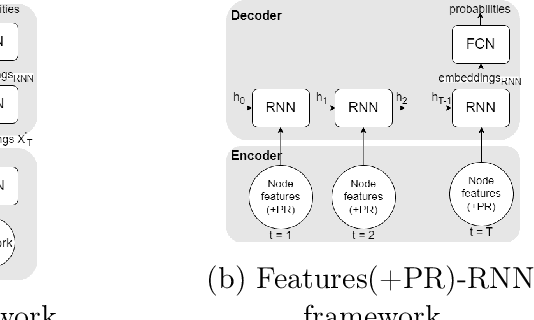

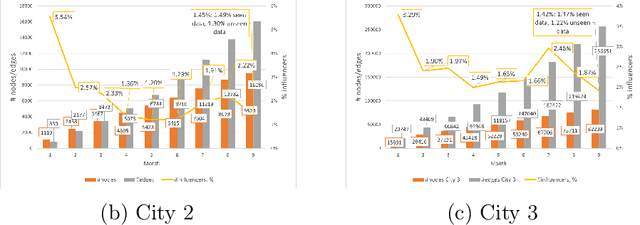
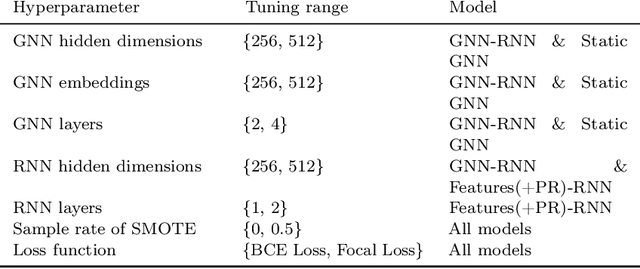
Abstract:Leveraging network information for predictive modeling has become widespread in many domains. Within the realm of referral and targeted marketing, influencer detection stands out as an area that could greatly benefit from the incorporation of dynamic network representation due to the ongoing development of customer-brand relationships. To elaborate this idea, we introduce INFLECT-DGNN, a new framework for INFLuencer prEdiCTion with Dynamic Graph Neural Networks that combines Graph Neural Networks (GNN) and Recurrent Neural Networks (RNN) with weighted loss functions, the Synthetic Minority Oversampling TEchnique (SMOTE) adapted for graph data, and a carefully crafted rolling-window strategy. To evaluate predictive performance, we utilize a unique corporate data set with networks of three cities and derive a profit-driven evaluation methodology for influencer prediction. Our results show how using RNN to encode temporal attributes alongside GNNs significantly improves predictive performance. We compare the results of various models to demonstrate the importance of capturing graph representation, temporal dependencies, and using a profit-driven methodology for evaluation.
Influencer Detection with Dynamic Graph Neural Networks
Nov 15, 2022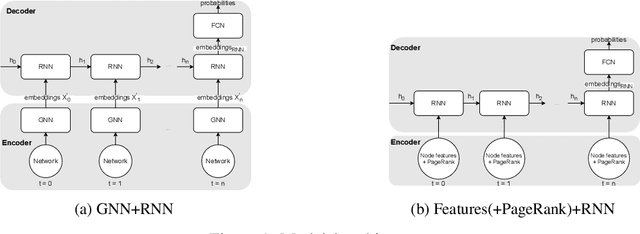
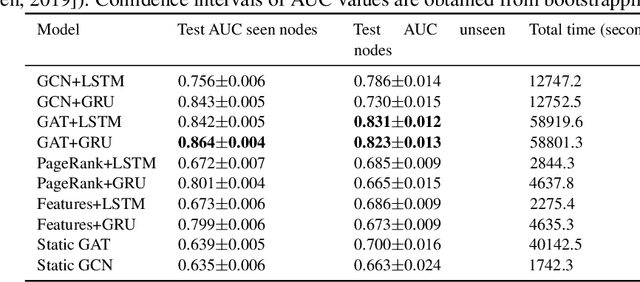
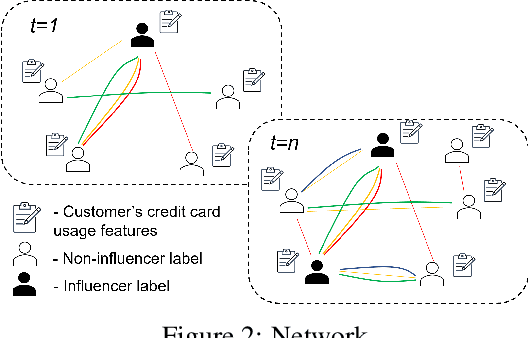
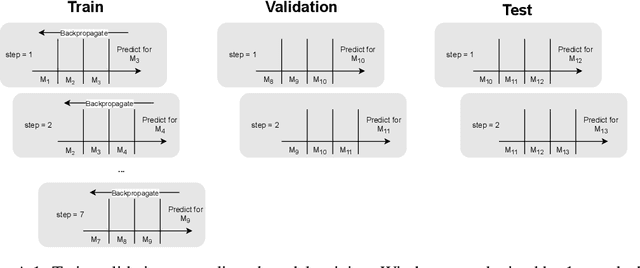
Abstract:Leveraging network information for prediction tasks has become a common practice in many domains. Being an important part of targeted marketing, influencer detection can potentially benefit from incorporating dynamic network representation. In this work, we investigate different dynamic Graph Neural Networks (GNNs) configurations for influencer detection and evaluate their prediction performance using a unique corporate data set. We show that using deep multi-head attention in GNN and encoding temporal attributes significantly improves performance. Furthermore, our empirical evaluation illustrates that capturing neighborhood representation is more beneficial that using network centrality measures.
 Add to Chrome
Add to Chrome Add to Firefox
Add to Firefox Add to Edge
Add to Edge